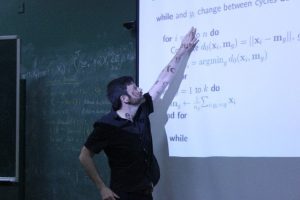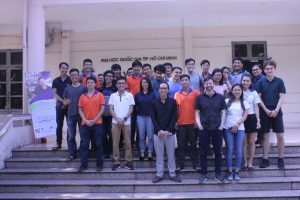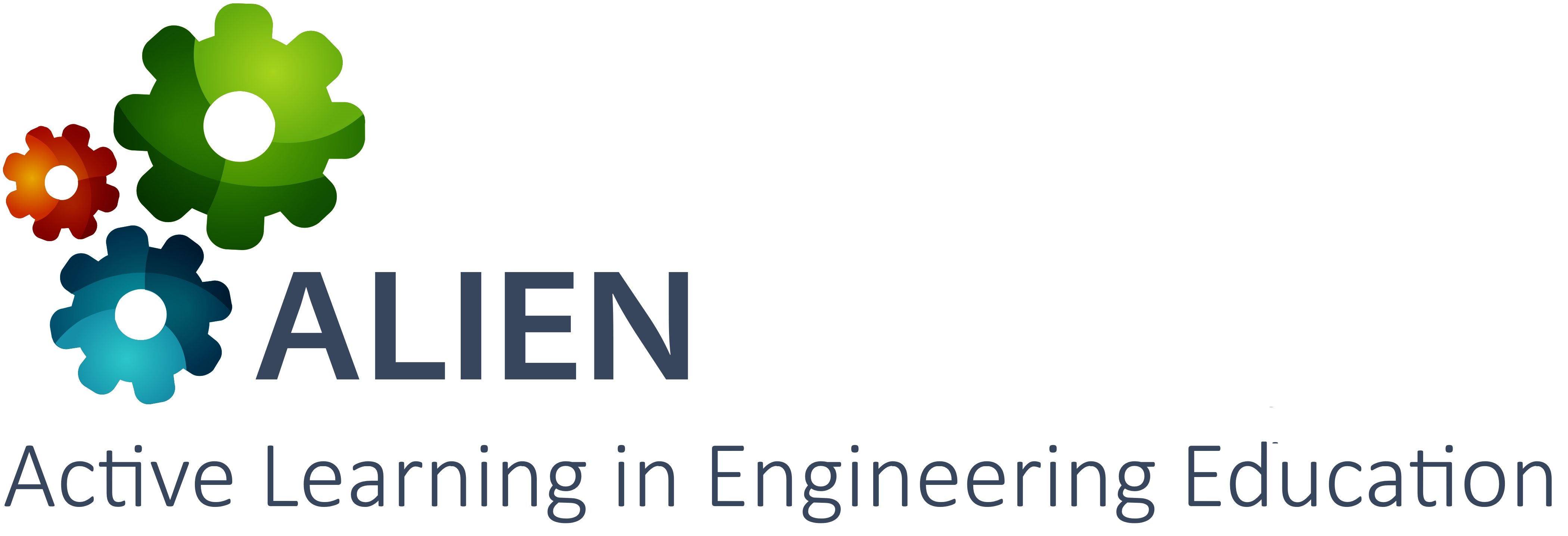 Course overview
Course overview
Students build knowledge for answering the following problem:
A system X evolves in time. The system is observed. The objective is to predict its future evolution. In this course, the system under observation focuses on financial data. For example, the system may model the prices of assets. Practical observation demonstrates that what is important is not the pricing process but the return process that calculates risk through a covariance function. At the same time, students learn how to build and manage a forecasting model of specific data sources.
Participants in piloting
The course is part of the Quantitative Computational Finance graduate program at John von Neumann Institute. The course is also offered in some Applied Mathematics graduate programs at the University of Economics and Law (VNUHCM) and the University of Natural Sciences (VNUHCM). The following groups of students were engaged:
- 21 students in semester 2 of academic year 2018 – 2019.
- 16 students in semester 2 of academic year 2019 – 2020.
The lecturer of the course is Dr. Jason Wyse (TCD) and Dr. An Mai (JVN). Trinity College Dublin (TCD) is the partner of JVN in the VIDAI project funded by Irish Aid.
Timeframe
Spring 2019
Spring 2020
 Use of ALIEN services and tools
Use of ALIEN services and tools
Students were exposed to active learning through weekly lectures and tutorials. Practical activities took place in the ALIEN problem-based learning lab. The course included a series of activities for building knowledge and applying practical skills in analyzing time series data in the financial industry. This work does not only require technical skills, such as data model design and analysis, but also soft skills to investigate the scenario that created the observed data. Diverse learning activities and teaching methodologies were used to best address the objectives of each learning session.
Students implemented the following steps:
- Students studied analysis techniques and executed exercises in different contexts provided by the lecturer.
- Students selected a topic and data package from a pre-defined list and applied different data analysis techniques for understanding the story in focus. They presented the story to the lecturer and their classmates. The story was used to predict the future of the scenario using evidence from their analysis results.
- Students reviewed lessons with interactive games using Kahoot®. Students created the games themselves under teacher guidance. After each game, the lecturer posed questions on the wrong or unclear answers, encouraging students to discover more on the missed points.
- Students played scenario games in which they provided input related to the practical application of knowledge and techniques in their scenario of choice.
- Students used R and Python to build and share their results with their classmates and lecturer.
In the context of tutorials, students further implemented the following activities:
- Students worked in groups on the analysis of the scenario that they selected and prepared a presentation summarizing their findings for the benefit of their classmates.
- Students summarized their results in a shared document that they collectively edited.
- Students packaged their solutions as an application and demonstrated in a presentation to their lecturer and classmates how to use the application in similar contexts.
- Students raised concerns or interests during the course and engaged in discussions with their classmates in the final session. The lecturer helped students align their points with the framework of the course for developing more effective understanding of concepts and enabling student to apply new knowledge in practice.


